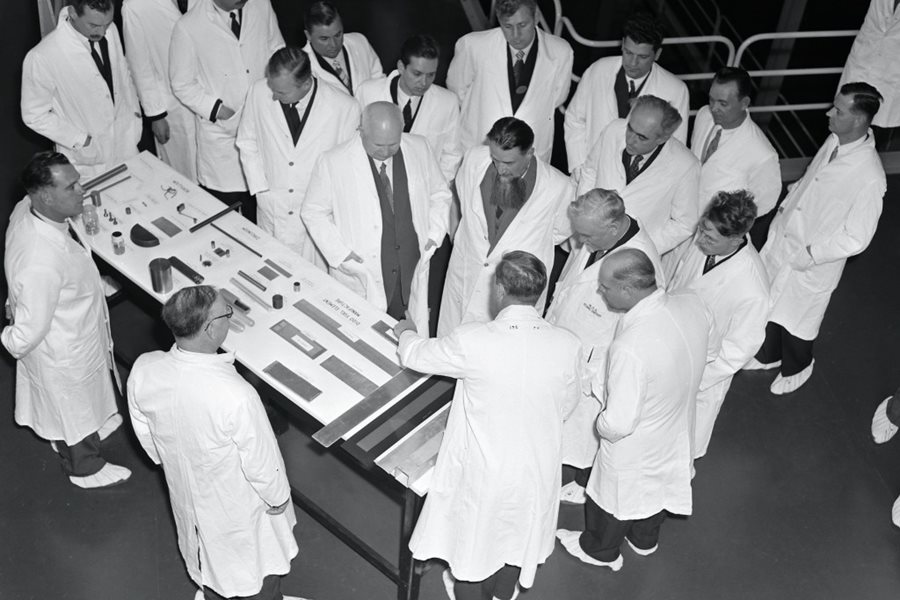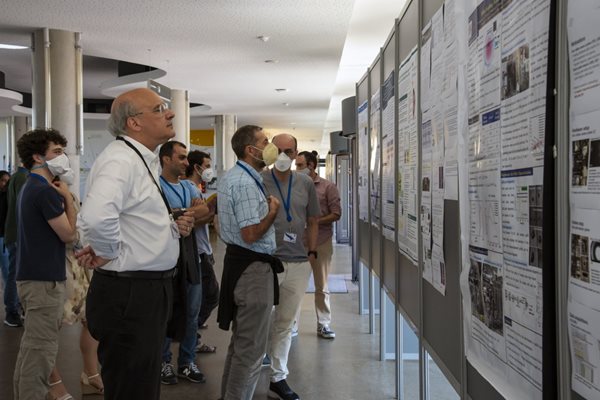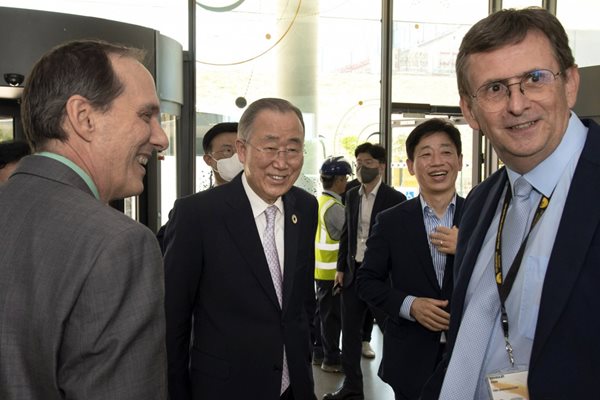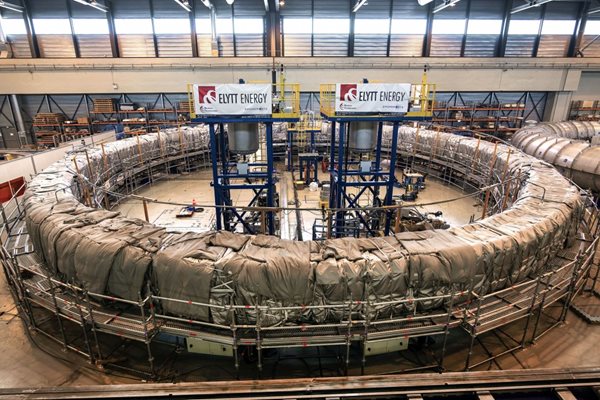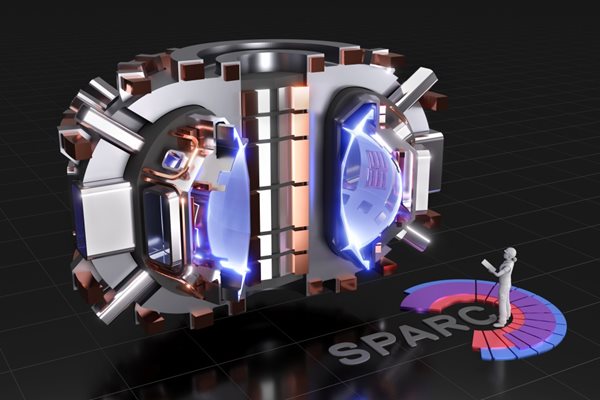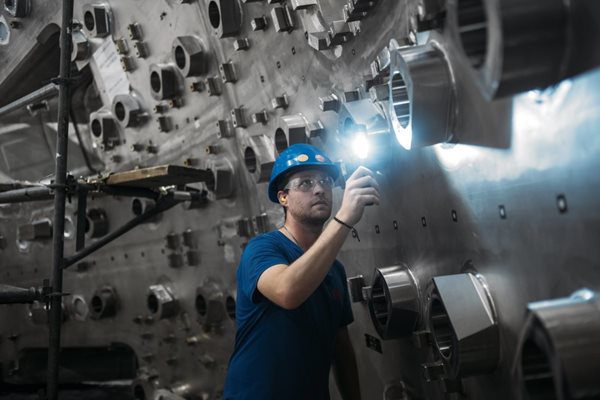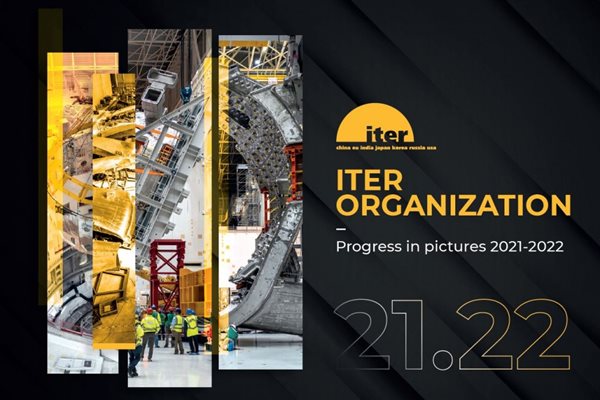
you're currently reading the news digest published from 18 Jul 2022 to 25 Jul 2022
featured4
of-interest2
publication1
press18
featured
Fusion world | "It just isn't like any other kind of research..."
On 21 April 1956, a fleet of large black limousines travelled in convoy from London to Harwell, just south of Oxford, to make an extraordinary and historic visit to the UK's Atomic Energy Research Establishment, founded ten years earlier. In one of the cars was the UK's Secretary of State for Foreign Affairs, Selwyn Lloyd, accompanied by Nikolai Bulganin, Chairman of the Council of Ministers of the USSR, and Nikita Khrushchev, First Secretary of the Communist Party. It was part of the first official state visit by the USSR to the UK since the Soviet state was founded in 1922. Just two years after Bulganin and Khrushchev's remarkable visit to Harwell, Geneva hosted the Second United Nations International Conference on the Peaceful Uses of Atomic Energy—better known as the 'Atoms for Peace' conference. It brought together 5,000 scientists from east and west to share their research and findings, and it was by far the largest-ever international gathering to focus on the potential of harnessing nuclear energy for peaceful purposes. Speeches were delivered in Geneva by the leading fusion scientists of the day—including Sweden's Hannes Alfvén, the USSR's Lev Artsimovich, Germany's Ludwig Biermann, the UK's (Australian-born) Peter Thonemann, and the USA's Edward Teller. As well as outlining their own countries' progress in research, they also stressed the vital importance of joint international cooperation. After the conference, 33 volumes of proceedings and papers were published. The index alone ran to some 210 pages¹. 'In the current political climate, it's important to remember that international cooperation in fusion research goes back a long way, and started long before the fall of the Iron Curtain,' says Tim Luce, ITER's Head of the Science & Operation Domain. 'And looking back, Atoms for Peace was the most extraordinary achievement, really, paving the way for much of the progress that has been made over the past sixty years.' 'Fusion research is unlike any other scientific research,' adds Alberto Loarte, Head of ITER's Science Division. 'There's a unique spirit of international collaboration and cooperation — and equally a unique lack of rivalry between different fusion research initiatives taking place around the world.' One of the first big international collaborative efforts was the creation of the Joint European Torus, JET. Design work started in 1973, and in 1977 the project was given the green light by the European Commission and the facility was sited at Culham, near Oxford, just a few miles away from Harwell. By the mid-1980s, it was the largest operational magnetic confinement plasma physics experiment in the world. At the same time, the stage was being set for the creation of ITER, a far, far bigger experiment. In November 1985, Mikhail Gorbachev and Ronald Reagan met at the Geneva Summit to hold talks on international relations and the arms race. Gorbachev proposed that an international collaborative project be created to develop fusion energy for peaceful purposes. Less than a year later, at the Reykjavik US-USSR Summit, agreement was reached between the European Union (Euratom), Japan, the Soviet Union and the USA to jointly pursue the design for a large international fusion facility—ITER. The huge and incredibly complex project design was approved by ITER Members in 2001, and within four years China, Korea and India had also joined—meaning that Members now represent half the world's people and some 85 percent of global GDP. 'ITER is one of hundreds of fusion initiatives that have been developed since the 1950s, all around the world,' says Tim Luce. 'And we encourage and support each and every one of them, as they help the community as a whole to learn, and ITER in particular to do things better.' JET remains a good example, and achieved a major milestone in February 2022, when 59 megajoules of sustained fusion energy were produced over a five-second period (averaging 11 MW)—beating the previous record of 21.7 megajoules, produced at JET in 1997. The work being done at ITER informs JET's own work and vice-versa. 'JET hit a big problem in 1997,' says Alberto Loarte, who spent much of his PhD and his early post-doctoral career working at JET, before moving to ITER. 'Carbon walls—as used at JET at the time—are excellent for containing high temperature plasmas producing fusion reactions, but they absorb too much of the fusion fuel.' 'We persuaded the European Fusion programme for JET to adopt the ITER wall material choice, using beryllium and tungsten, for experiments to start in 2011. This was very successful in decreasing fuel absorption, but it decreased fusion power production a lot! The plasma temperature and pressure were too low for successful fusion experiments. It took more than a decade of research to resolve the issues and to get back and beyond where JET was in 1997! Changing the JET materials to mimic ITER did turn out to be the right decision—but it can take an incredibly long time to solve such complex problems, and we can only do it by working together.' Since 2008, under the auspices of ITER, the International Tokamak Physics Activity (ITPA) framework coordinates fusion research internationally. ITER also provides links to hundreds of laboratories, universities and research centres around the world which are contributing to global progress towards fusion energy². 'Fusion research is a very open field,' says Alberto Loarte. 'You'd be surprised how rare this is, in the world of science, or indeed any world.' He goes on to explain: 'Fusion used to be plagued by single experimental results and claims which couldn't be reproduced, easily, or sometimes at all. But nowadays if you find something in fusion, your first instinct is to share it with everyone else, and then get others to try it out and see if they can validate your results. We actively want others to be successful—and they want the same for us.' 'I've been working my whole professional life on this,' he adds. 'People have, in the past, made over-optimistic claims for fusion, but I think the approach we're taking here at ITER—being conservative and cautious in our assumptions and looking at the long-term—will deliver positive, concrete results. We don't know with high precision what those results will be, but I'm confident that through international cooperation we can demonstrate fusion power, here at ITER.' 'It's fantastic to be part of the huge international team here at ITER,' agrees Tim Luce. 'It's an absolutely unique physics experiment, going where nobody has ever gone before. 'One of the most remarkable things about fusion research,' he adds, 'is that in the fusion community we've always managed to maintain bridges not just between nations that are traditionally allies, but also between nations that may be in conflict in other areas. The ITER Members may have different political and cultural systems—sometimes dramatically different—but we're all working here towards our common cause, our common goal. And that's a tremendous thing to be a part of.' ¹See https://digitallibrary.un.org/record/3808554?ln=en ²See https://www.iter.org/fusionlinks View a video of the 1956 Harwell visit here. View a newsreel of the second Atoms for Peace Conference here.
Mitigating plasma disruptions | Second IAEA Technical Meeting held at ITER
Disruptions of tokamak plasmas (fast events leading to the complete loss of thermal and magnetic energy on millisecond timescales) can pose significant risks to the lifetime of components in large-scale devices such as ITER and other future tokamaks. The physics processes underlying these events are complex and have been a long-term research topic in the tokamak community, but the urgency in this area has now substantially increased since reliable schemes to handle disruptions must be in place when ITER operation begins. An international community of plasma physicists and engineers has been mobilized to tackle this difficult problem, in large part as a result of the formation by the ITER Organization of an ITER Disruption Mitigation System (DMS) Task Force. These specialists are committed to take up the challenge to improve the physics understanding and to develop and optimize solutions for disruption avoidance and mitigation. Last week, at the 2nd International Atomic Energy Agency (IAEA) Technical Meeting on disruptions hosted at ITER, the IAEA and the ITER Organization welcomed more than 90 experts in the field. While the first meeting in this series in 2020 had to be held by videoconference, this time more than 35 experts took the opportunity to meet in person at ITER, enjoying live discussions during the oral sessions and in front of the posters on display in the entrance hall of ITER Headquarters. They were also, many for the first time, able to see the spectacular progress on the ITER construction site during specially arranged tours guided by members of the ITER Science Division. This series of IAEA technical meetings aims to coordinate and discuss in detail experimental, theoretical and modelling work covering a wide range of key topics: Heat and electromagnetic loads as well as high energetic runaway electrons Disruption prediction to avoid or mitigate these events Physics and technology for load mitigation The dense 3.5-day program included 32 oral presentations (of which 7 were invited), 19 poster presentations, and free discussion sessions. Developments for disruption mitigation in ITER had a prominent place in the agenda, including a special session on technology developments relevant for the ITER disruption mitigation system, which is rapidly heading towards its final design stage to ensure readiness for the first ITER operational campaigns beyond first plasma demonstration.
On site | Distinguished visitors from Korea
Participants to the Europe-Korea Conference on Science and Technology (EKC) in Marseille took an afternoon off, last week, to pay a visit to the ITER site. The 120-person-strong group was headed by Korea's Vice-Minister of Science and ICT, Tae-Seog Oh, accompanied by former Secretary-General of the United Nations (2007-2016) Ban Ki Moon, now Chairman of the Foundation for a Better Future. Whereas Vice-Minister Oh receives regular reports on ITER, former Secretary-General Ban was new to the project's progress and challenges. As Kijung Jung, the head of the Korean Domestic Agency, guided the group through site landmarks such as the Poloidal field Coil Winding Facility, the Assembly Hall, and the Tokamak pit, Ban discovered something that was familiar to him: nations working together for a common goal. The ITER collaboration, which brings together 35 nations, is smaller that the United Nations, which comprises 193 Member States. 'But what I sense here is a similar spirit,' said the former Secretary-General. Standing at the foot of the giant, Korean-built sector sub-assembly tools where ITER vacuum vessel sector 'modules' are assembled, both men felt an intense pride for their country. 'Of course there are issues, delays and unpredictable challenges,' said Vice-Minister Oh. 'This is inevitable with such a complex, multinational, one-of-a-kind venture.' Korea—which passed a 'Fusion Energy Development Act' as early as 2006—is determined, in the Vice-Minister's words, 'to make it happen and find ways to speed up its availability.' As for Ban Ki Moon, whose most significant contribution during his tenure as the 8th Secretary-General of the United Nations was the adoption of the 2015 Sustainable Development Goals and the Paris Agreement on Climate Change, he sees in ITER and fusion a key element in the global fight against climate change. 'I believe in the power of science,' he said at the close of the visit, asking Kijung Jung to provide him with more information, documents and illustrations for a deeper understanding of the promise of ITER—this 'most ambitious project' for the future of humankind.
Image of the week | In the slow cooker
The thermostat is set at 140 °C and the timer on 72 hours. But contrary to the roasting of a Thanksgiving Turkey, the 'curing' of the resin inside a poloidal field coil cannot be left unattended. More like the cooking of a soufflé, the operation requires constant attention and non-stop monitoring. The curing phase is the last phase of the resin impregnation process. It is particularly delicate, as it aims to ensure the electrical insulation and rigidity of a coil before it is equipped and cold tested. In the on-site winding facility, poloidal field coils PF5 and PF2, both 17 metres in diameter, went through this process before. With poloidal field coil PF4, the process will be the same, except for the size of the component in question (24 metres in diameter) and the quantity of resin (2,700 litres) that needs to be injected and cured. In the curing process, the resin that was injected in the coil at a temperature of 50 °C is heated to 140 °C by a strong electrical current fed to the conductors (the Joule effect) and by electrical resistances positioned around the mould. Since resin impregnation began for PF4 two weeks ago, staff from the European Domestic Agency Fusion for Energy and its contractors have taken shifts to cover the 24/7 monitoring of the operation. The mould that contains the impregnated PF4 will be disassembled in mid-August and the coil moved to the assembly station in early September. Following final assembly and cold test operations, the finalized coil should be transferred to the ITER Organization before mid-2023.
of-interest
Massive increases in "private" fusion investment
Investment in private fusion companies has more than doubled in the past year and eight new companies have been founded, bringing the total to around 33. According to the global fusion industry 2022 Report, six companies have now each raised over $200m in total, with notable investments in the last year including over $1.8 billion for Commonwealth Fusion Systems and $500m for Helion Energy, allowing them to develop pilot plants to demonstrate fusion electricity. The huge step up in investment, coupled with increasing government support for fusion in the U.K. and the U.S., is increasing confidence within the fusion industry. Andrew Holland, Chief Executive Officer of the Fusion Industry Association, states in the report, 'We must not see a 'competition' between publicly funded and privately funded fusion approaches; instead, we must build real partnerships [...] With investment accelerating, it is increasingly likely that commercial fusion will become a reality within the next two decades, providing the basis for prosperity, safety, and security for many years to come.' Photo: Commonwealth Fusion Systems and its SPARC project raised over $1.8 billion last year. Read the full article in Forbes.
Gallery: 5 European sectors, different stages
In advance of the delivery of the first European vacuum vessel sector this autumn, the European Domestic Agency Fusion for Energy has released a new series of photos from the European workshops in Italy where the sub-parts of five sectors are manufactured and assembled. At Mangiarotti S.p.A (Monfalcone), see the final activities underway on sector #5, which will be the first to arrive. The four sub-segments have been welded into the final D shape and detailed inspections are underway. At Walter Tosto S.p.A (Chieti), technicians on working on multiple sectors, performing welding, inserting in-wall shielding, and carrying out inspections. And at Belleli Energy EPC (Mantova), one poloidal segment is shown in the radiographic testing bunker, while others are prepared for welding, or cleaned during final inspection. Fusion for Energy (F4E), managing the European contribution to ITER, has entrusted the fabrication of five European vacuum vessel sectors to the AMW consortium (Ansaldo Nucleare, Mangiarotti, Walter Tosto) and their subcontractors ENSA, Belleli. Completion figures range between 81% (Sector #2) and 97% (Sector #5). See the photos on the Fusion for Energy Flickr page (May 2022).
